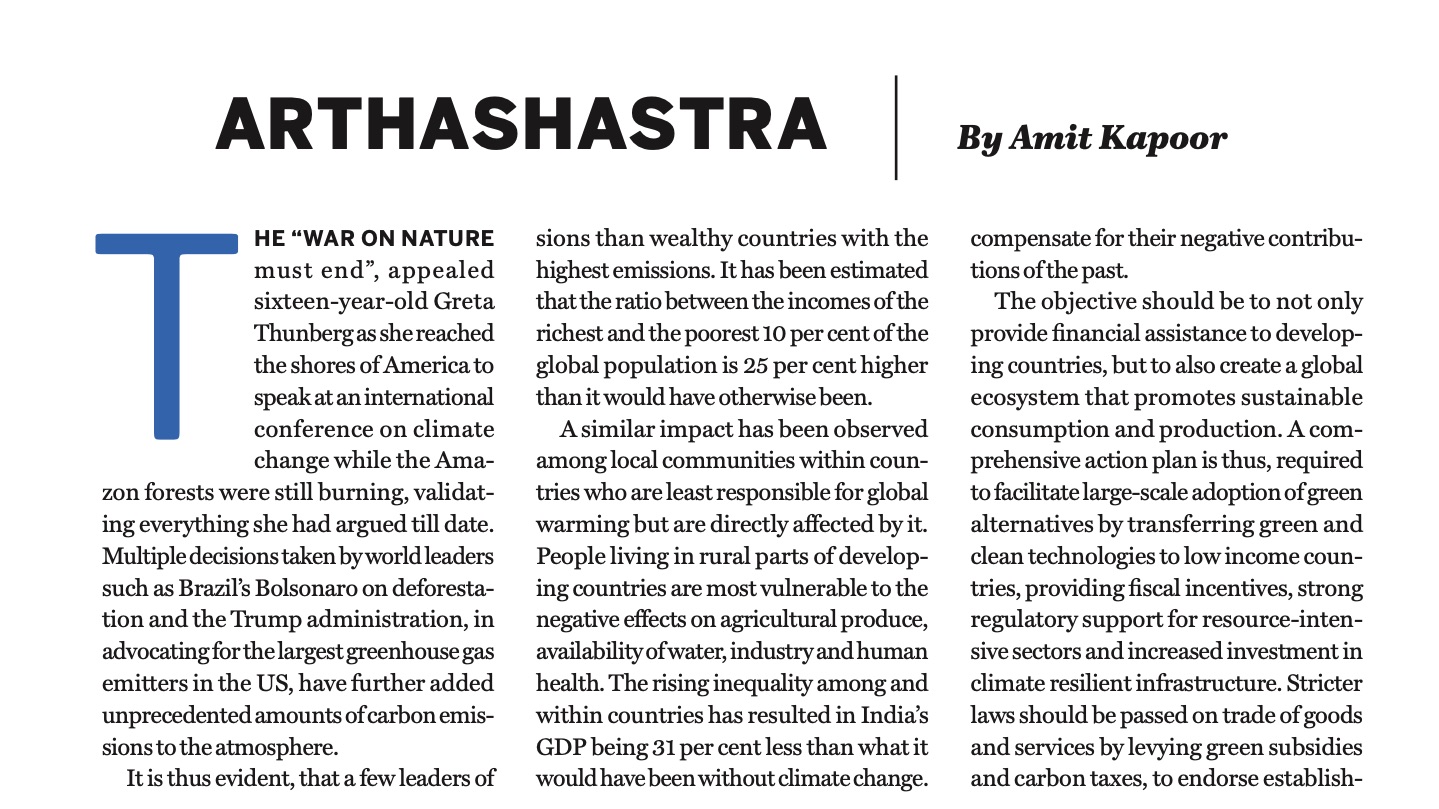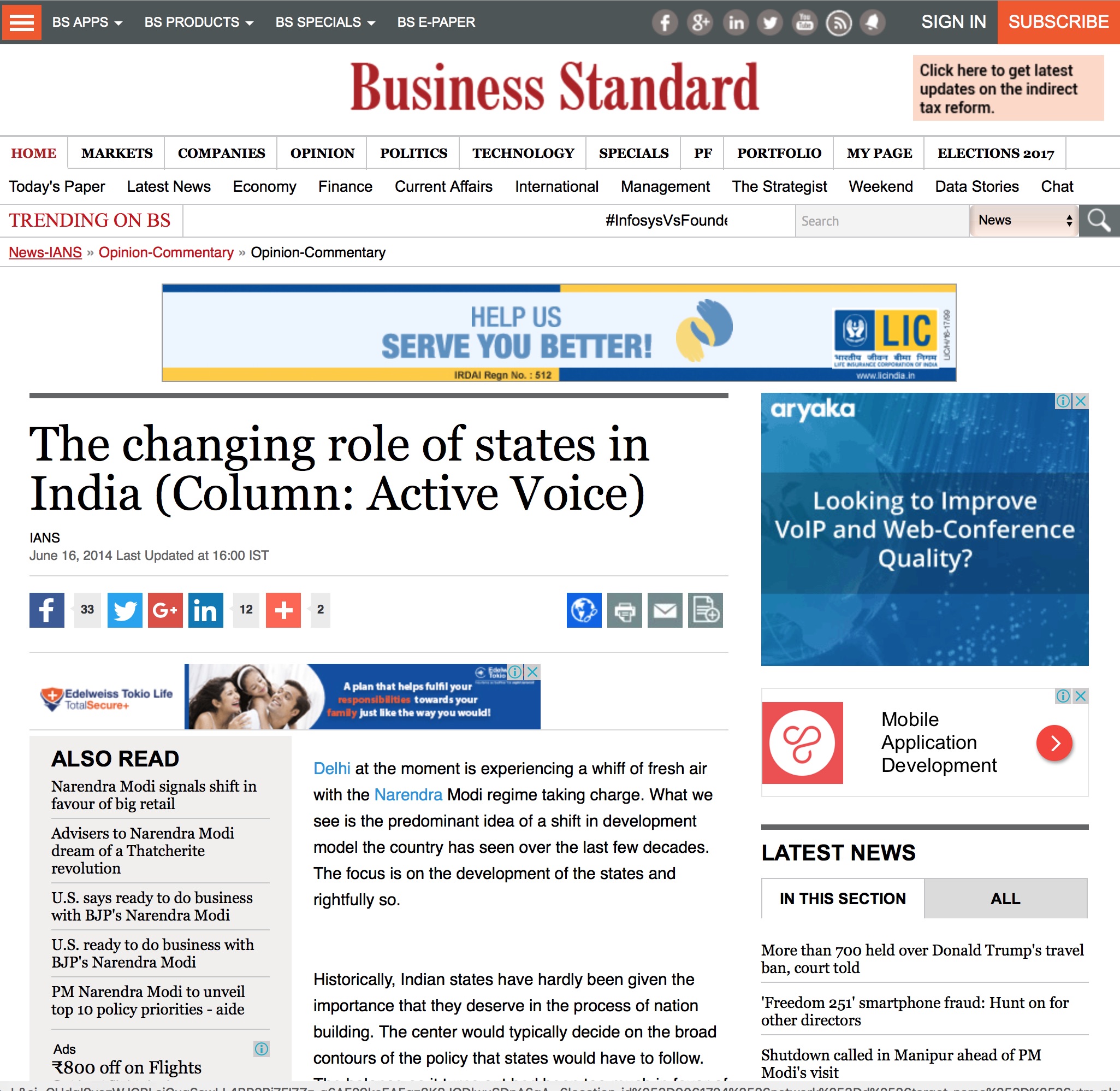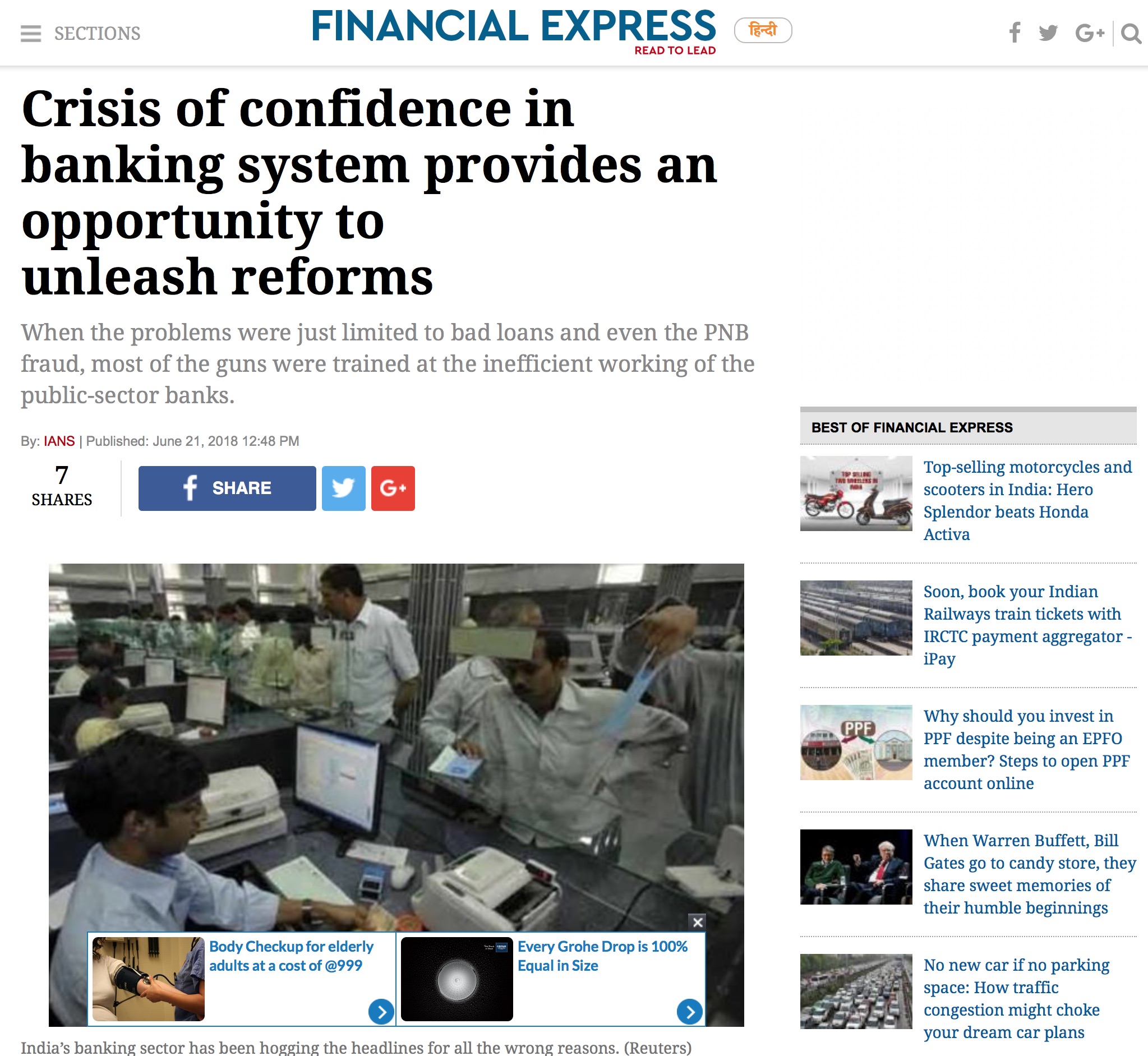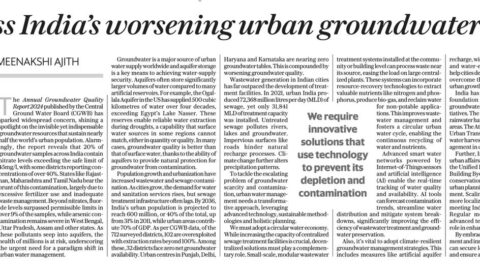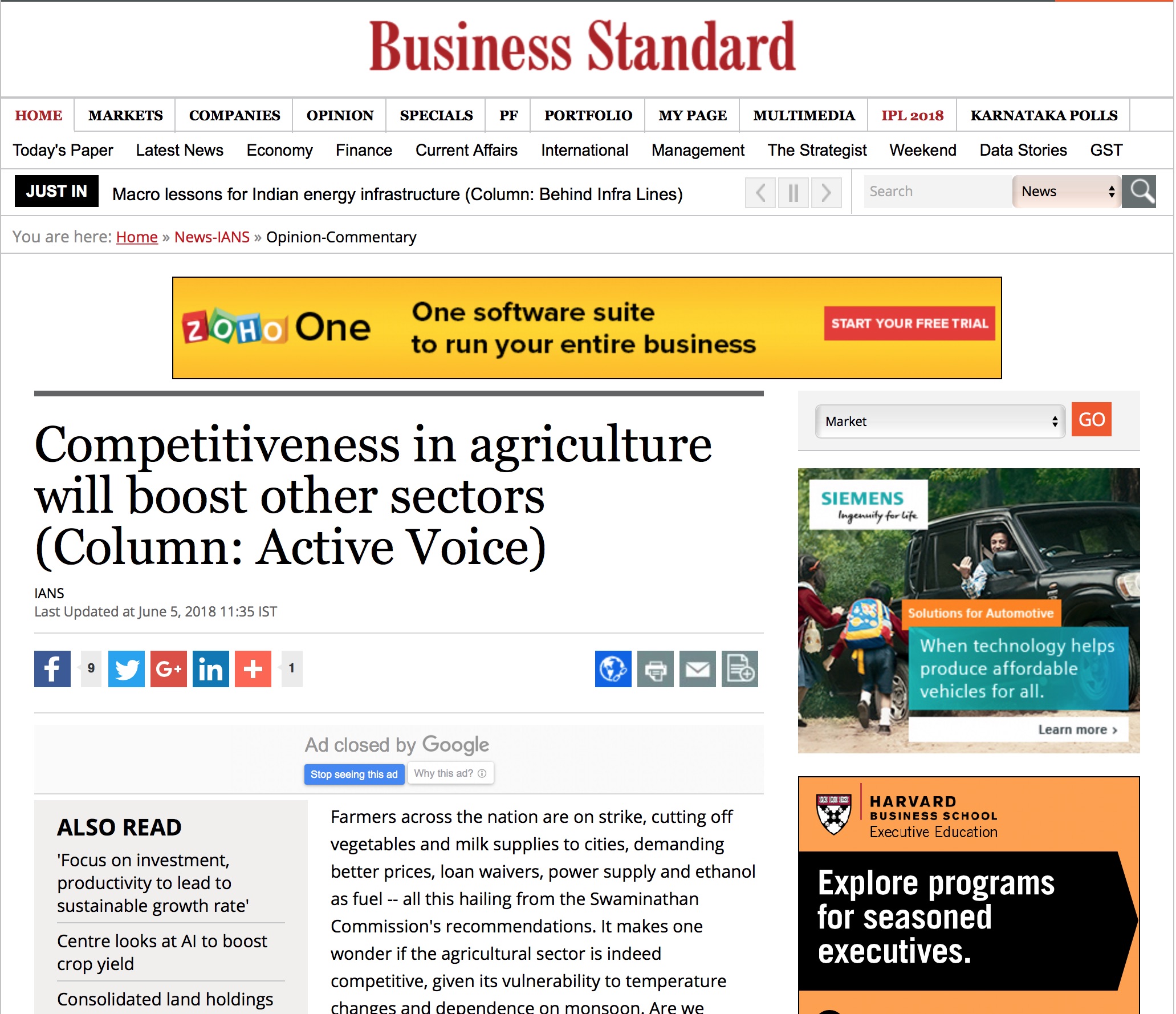By Amit Kapoor & Menakshi Ajith
As India marches toward its vision for 2047, the year 2025 is a critical fulcrum. It is not just another point on the timeline; it is the year that will shape the trajectory of the next two decades, carving the path for a nation that seeks to balance rapid economic growth with the challenges posed by climate change. Policy decisions henceforth will influence greatly whether India rises to the challenge of becoming a global powerhouse that leaves no one behind or whether it falters under the weight of unresolved inequalities and environmental threats. In this manifesto for India in 2025, we envision a nation that thrives in harmony with its people and the planet—an India where the future is as inclusive and green as it is prosperous.
In 2024, India achieved significant milestones across various sectors, propelling its vision of sustainable growth and global leadership. The country’s digital transformation continued to accelerate, processing 24,100 crore financial transactions and facilitating 17.95 crore course enrolments through DIKSHA, enhancing digital education accessibility.
India’s renewable energy capacity expanded by 24.2 GW (13.5%) to reach 203.18 GW, now accounting for over 46.3% of the total energy capacity, demonstrating its commitment to clean energy. The Uttar Purva Transformative Industrialization Scheme, launched with an outlay of Rs. 10,037 crore, aims to boost the Northeast region’s industrial capacity.
Additionally, India made notable progress in electric mobility with the launch of the PM E-DRIVE Scheme, a Rs. 10,900 crore initiative to accelerate electric vehicle adoption and charging infrastructure development. In workforce inclusion, the Labour Force Participation Rate (LFPR) for women rose from 23.3% to 41.7% over six years, signaling positive trends in gender equality. ISRO’s space achievements, including the successful launch of the X-ray polarimeter satellite (XPoSat) and the Aditya L-1 spacecraft entering its final orbit, highlighted India’s growing capabilities in space exploration. In 2024, India also made significant strides in enhancing its innovation ecosystem, securing the 39th position in the Global Innovation Index, up from 81st in 2015. The U.S.-India Innovation partnership, strengthened by initiatives like the U.S.-India Initiative on Critical and Emerging Technologies (ICET) and the Innovation Handshake, creates pathways for collaboration in advanced sectors like semiconductors, AI, and renewable energy. These achievements reflect India’s dynamic approach to digital infrastructure, clean energy, industrial growth, and technological innovation.
Despite this and several other noteworthy achievements there are some challenges and opportunities that India needs to address and prioritise for 2025.
Skilling and job creation:
India faces significant skilling challenges that could hinder its economic growth, particularly the declining growth rate of highly skilled workers. The largest proportion of the workforce (66%) fall under the semi-skilled category earning moderate wages compared to higher-skilled positions. The widening skill mismatch between education qualification and employment opportunities poses a deep concern for India leading to underemployment and the underutilization of human resources. Despite holding degrees in engineering, postgraduate qualifications, and even specialized skills, graduates and highly educated individuals are applying for low-skill, Group D positions, such as sweepers and peons. Closing the gap and upskilling from semi to high skilled can increase the wages by 1.5-2.5% times leading to a massive boost in national and individual prosperity. In 2025, it is also critical to align skilling, employment and education sectors to harness maximum positive outcomes. To this end, there is a need to spend 6 per cent of the nation’s GDP on the education sector as envisioned in the NEP 2020. The announcement of PMKVY 4.0 with a focus on skill development among youth, offering training in cutting edge fields such as Industry 4.037, AI, robotics, mechatronics, Internet of Things, and drones is a step in the right direction With targeted skilling programs and data-driven strategies India can leverage its demographic dividend to fuel innovation, boost productivity, and enhance national competitiveness, positioning itself for sustained economic growth in 2025.
Tackling Climate Change and Sustainable Development:
India has made notable strides in addressing climate change, but significant challenges remain. The country has actively implemented early warning systems and resilience strategies to combat the increasing frequency of extreme weather events, with a majority of the states in the country seeing more extreme weather days in 2024. Despite progress in renewable energy, India’s heavy reliance on coal continues to slow its energy transition, raising concerns about long-term sustainability and carbon emissions. Air pollution, particularly in cities like Delhi, Mumbai, and Ahmedabad, remains a critical issue, with 83 of the 100 most polluted cities globally located in India. Programs like the National Clean Air Programme (NCAP) have been launched to tackle pollution, but urban and rural adaptation strategies still need to be scaled up, particularly in flood- and heatwave-prone areas.
India’s leadership at COP29, where it highlighted the gap in climate financing, further stressed the need for greater financial commitments to support developing countries. With the next round of Nationally Determined Contributions (NDCs) set for 2025, the emphasis on securing both domestic and international investments for climate action will be crucial to ensuring India’s resilience in the face of mounting environmental challenges.
Harnessing the Global Supply Chain Shifts:
India stands to gain from the shifting dynamics in global trade, particularly due to US-China trade tensions. As countries reconsider their supply chain strategies, India can position itself as an attractive manufacturing hub, especially in mid-tech sectors like textiles and electronics. By negotiating and expanding Free Trade Agreements (FTAs), particularly with major partners such as the US, India can reduce tariffs on its exports, which will boost sectors like textiles that have historically struggled with high tariffs. While India did not significantly benefit from previous global supply chain shifts, it has a unique opportunity in 2025 to capitalize on these changes and strengthen its role in the global economy.
Addressing these key areas in 2025; harnessing the potential of mid-tech sectors, capitalizing on global supply chain shifts, boosting rural and agricultural recovery, and enhancing infrastructure and skilled workforce development is critical for ensuring India’s long-term, balanced growth. By focusing on diversifying its economy, India can create more sustainable job opportunities, reduce regional disparities, and foster greater economic inclusivity. These efforts will not only support the country’s transition towards a more resilient and competitive economy but also enable it to fully leverage its demographic advantage, turning challenges into opportunities for widespread prosperity.
The article was published with Business World on January 3, 2025


